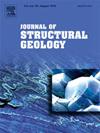Fine geometric structures and characteristics of present-day activity of the Tianshui–Baoji segment of the West Qinling Fault, northeastern margin of the Tibetan Plateau
IF 2.9
2区 地球科学
Q2 GEOSCIENCES, MULTIDISCIPLINARY
引用次数: 0
Abstract
Accurately delineating the fine geometric structures of active faults and assessing their present-day activity are of paramount importance for studying regional fault tectonics and evaluating seismic risk. The West Qinling Fault (WQLF) is situated in a critical zone where material from the Tibetan Plateau is extruded towards the northeast, and the fine geometric structures, kinematic characteristics, and present-day activity of its eastern segment (Tianshui–Baoji segment) can provide important insights into the mechanisms of structural transition at the termination of strike-slip faults and the mode of material expansion in the plateau. In this study, the spatial distribution of the Tianshui–Baoji segment and the characteristics of present-day activity are systematically investigated through detailed interpretations of high-resolution satellite images, digital elevation models (DEMs), unmanned aerial vehicle (UAV) images, geological and geomorphological field surveys, and isotopic dating techniques. The results indicate that the Tianshui–Baoji segment, which begins as a single fault, gradually splays into multiple branching faults towards the east. Both the main fault and these branches have remained active since the Late Pleistocene and even during the Holocene, thus warranting attention to the seismic risk potential in the eastern segment of the WQLF, particularly at its termination. Moreover, the splay of the Tianshui–Baoji segment has led to the gradual divergence of the fault activity of the component to the east, reducing the maximum magnitude of seismic events at the fault terminus and resulting in significant differences in the seismic recurrence intervals between the eastern segment and the central segments of the WQLF (Zhangxian segment, Gangu–Wushan segment).
青藏高原东北缘西秦岭断裂带天水-宝鸡段精细几何构造及现今活动特征
准确圈定活动断裂的精细几何结构并评估其现今活动性,对于研究区域断裂构造和评价地震危险性具有重要意义。西秦岭断裂位于青藏高原物质向东北挤压的关键地带,其东段(天水—宝鸡段)精细的几何构造、运动特征和现今活动特征,为研究走滑断裂末端的构造转换机制和高原物质扩张模式提供了重要依据。本文通过高分辨率卫星图像、数字高程模型(dem)、无人机(UAV)图像的详细解译、地质地貌野外调查和同位素测年技术,系统研究了天水-宝鸡段的空间分布和现今活动特征。结果表明,天水-宝鸡段以单条断裂开始,向东逐渐形成多条分支断裂。自晚更新世甚至全新世以来,主断层和这些分支都保持活跃,因此值得关注西qlf东段,特别是其末端的地震风险。此外,天水-宝鸡段的伸展导致该分量的断层活动向东逐渐分化,使断层末端地震事件的最大震级减小,导致WQLF东部段与中部段(张县段、甘谷-巫山段)的地震重现间隔存在显著差异。
本文章由计算机程序翻译,如有差异,请以英文原文为准。
求助全文
约1分钟内获得全文
求助全文
来源期刊

Journal of Structural Geology
地学-地球科学综合
CiteScore
6.00
自引率
19.40%
发文量
192
审稿时长
15.7 weeks
期刊介绍:
The Journal of Structural Geology publishes process-oriented investigations about structural geology using appropriate combinations of analog and digital field data, seismic reflection data, satellite-derived data, geometric analysis, kinematic analysis, laboratory experiments, computer visualizations, and analogue or numerical modelling on all scales. Contributions are encouraged to draw perspectives from rheology, rock mechanics, geophysics,metamorphism, sedimentology, petroleum geology, economic geology, geodynamics, planetary geology, tectonics and neotectonics to provide a more powerful understanding of deformation processes and systems. Given the visual nature of the discipline, supplementary materials that portray the data and analysis in 3-D or quasi 3-D manners, including the use of videos, and/or graphical abstracts can significantly strengthen the impact of contributions.
 求助内容:
求助内容: 应助结果提醒方式:
应助结果提醒方式:


